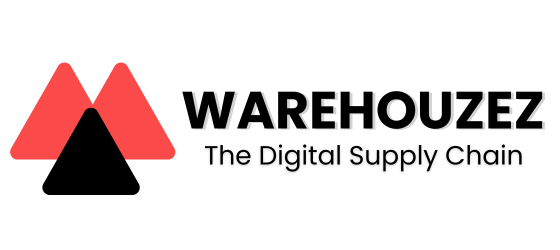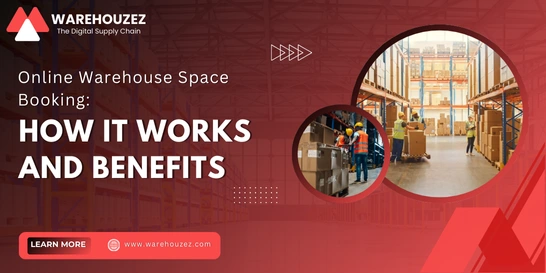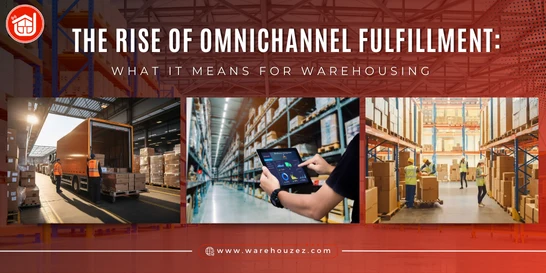7 Important Benefits of Implementing Lean Warehousing
7 Important Benefits of Implementing Lean Warehousing
Managing warehouse operations is certainly a complex challenge for businesses. Many companies oftentimes struggle with bottlenecks, delays, and wasted resources. These issues, if not addressed, can result in higher costs, slower processes, and unsatisfied customers. As e-commerce and consumer demands grow, effective warehouse management is crucial for success.
This is where implementing lean warehousing can prove to be a game-changer. Lean warehousing is essentially a concept derived from lean manufacturing. It offers a way to eliminate waste and enhance efficiency. Studies show that lean practices in warehousing can reduce total inventory costs by up to 40%. This can improve a company's profitability, making it a must-have strategy for modern businesses
In this blog post, we will explore what lean warehousing is and the key benefits of implementing it. So, let's get started!
What is Lean Warehousing?
Lean warehousing is an approach to warehouse management that focuses on maximizing efficiency while minimizing waste. It fundamentally follows lean manufacturing principles. As a result, it aims to streamline processes, reduce costs, and improve operational performance. By adopting lean practices, warehouses can do more with less, improving productivity without sacrificing service quality.
This method involves removing unnecessary steps or processes that don’t add value. This further helps to optimize workflow across key areas like inventory management, order picking, packing, and shipping.
Lean warehousing integrates technology like automated systems and warehouse management systems (WMS) to further increase efficiency. This approach makes today's modern warehouses more adaptive and efficient, enhancing customer satisfaction.
Examples of Lean Warehousing
Let's look at one of the most popular examples of lean warehousing, that is, Toyota's just-in-time inventory system.
Toyota revolutionized manufacturing with its just-in-time (JIT) inventory management system, which is now a cornerstone of lean warehousing. This method optimizes inventory levels by producing and receiving goods only when they are needed. This reduces overstocking and allows for a smarter response to demand fluctuations.
5S Principles of Lean Warehousing
The lean warehouse management methodology works on five primary principles. The 5S principles are powerful yet simple, improving warehouse productivity and safety.
Sort
The first step is to sort through all materials and tools, separating necessary from unnecessary items. Anything not required for daily operations should be immediately removed from the workspace. This creates a clutter-free environment, reducing confusion and speeding up workflows.
Set in Order
After sorting, the next step is to arrange everything in a proper order. Tools, materials, and equipment should be placed in clearly labeled and easily accessible areas. This reduces wasted time searching for items and ensures that everything is where it needs to be when it’s needed.
Shine
It goes without saying that cleanliness is key to maintaining an efficient warehouse. The “shine” principle involves regularly cleaning and inspecting the workspace to ensure everything is in good working order. This not only improves the environment but also helps identify maintenance issues before they become major problems.
Standardize
Standardizing processes means creating routines and protocols that everyone follows. This could involve creating procedures for inventory handling and using tools and safety wear. Standardization ensures that tasks are performed consistently, reducing errors and increasing efficiency.
Sustain
The final step is to maintain the discipline necessary to keep the 5S practices in place. Regular audits, training sessions, and employee involvement help sustain these improvements over the long term. A well-sustained 5S system leads to a culture of continuous improvement.
7 Important Benefits of Implementing Lean Warehousing
Now that we have covered the basics, let’s discuss the benefits of lean warehousing and why every modern warehouse should consider adopting it.
Reduced Operational Costs -
Lean warehousing helps identify and eliminate wasteful processes, reducing overhead costs. By improving workflows and eliminating bottlenecks, warehouses can operate more efficiently. This further leads to significant savings in labor, storage, and inventory management costs.
Improved Inventory Management -
Lean principles increase inventory accuracy by reducing stockouts and overstocks. Using technologies like warehouse inventory management systems can further enhance this by providing real-time visibility into inventory levels and movements.
Faster Order Fulfillment -
With more efficient processes in place, this innovative model can significantly reduce the time it takes to fulfill orders. By minimizing delays and errors in picking, packing, and shipping, warehouses can ensure faster deliveries, increasing customer satisfaction.
Enhanced Safety and Employee Morale -
A well-designed, clutter-free warehouse is not only more organized but also safer. Lean warehouse management emphasizes safety by removing hazards and creating a cleaner work environment. This leads to fewer accidents, less downtime, and a more motivated workforce that feels valued.
Better Use of Space -
This model optimizes space utilization by reducing unnecessary storage and organizing items. This allows warehouses to store more products in the same space without the need for expansion. Proper space utilization also helps in quicker access to goods, improving overall productivity.
Increased Flexibility -
Lean warehousing allows companies to respond to ever-changing consumer and market demands. With streamlined processes and minimal waste, warehouses can easily scale up or down based on customer needs. This flexibility is indeed important in today’s fast-paced world, where demands fluctuate.
Higher Customer Satisfaction -
By focusing on accuracy, efficiency, and speed, lean warehouse management ensures that the right product reaches the customer at the right time. Fewer errors, faster deliveries, and improved service levels all contribute to higher customer satisfaction.
Tips for Implementing Lean Warehousing
Implementing lean warehousing successfully requires strategic planning and technology integration. Here are some tips to get started with lean warehouse management:
Leverage the Latest Technology -
The first tip is to invest in the latest tech tools like barcode scanners, RFID tracking, IMS, and WMS software to automate processes. These technologies provide real-time data, which helps in making quicker, more well-informed decisions.
Train Your Team -
Employee training is extremely essential for successfully implementing lean principles. Make sure that your team understands the goals of lean warehouse management and how their daily tasks contribute to the overall efficiency.
Start Small -
Implement lean warehousing practices gradually. Begin with one area of your warehouse, such as inventory management or picking routes, and fine-tune it before expanding lean practices to other operations.
Continuous Improvement -
It's absolutely true that lean warehousing is not a one-time effort. Regularly review processes, take feedback from employees, and look for areas where further improvements can be made.
Bottom Line
Without a doubt, lean warehousing is not just a trend; it's a necessity in today’s competitive business landscape. By embracing lean principles, warehouses can cut costs, improve efficiency, and deliver better service to customers. The journey to lean might take time and effort, but the long-term benefits—such as less waste, increased flexibility, and improved customer satisfaction—make it worthwhile. Every warehouse that wants to stay efficient should consider adopting lean warehousing practices for a more sustainable, profitable future.



